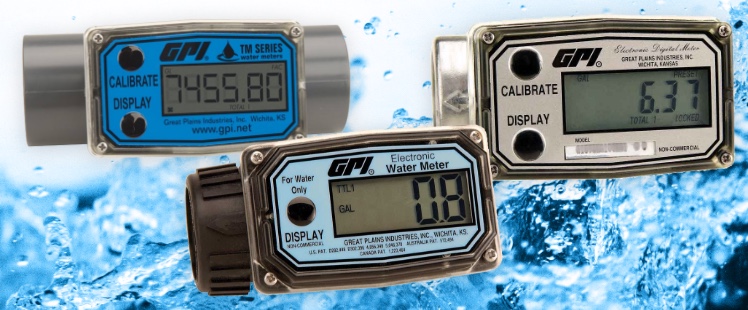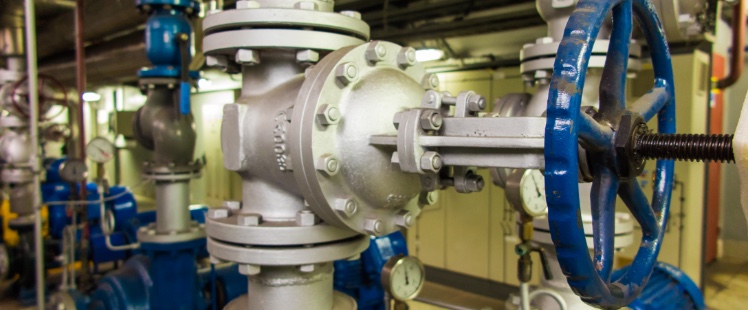Unsure which water meter types are right for you? Want to know more about which flow meter works best for your application? In this article, we discuss the two main types of water meters as well as the categories of water metering that are used today.

What Are Water Meters Used For?
Water meters measure the volume and consumption of water, and other liquids used by residential, commercial and industrial buildings. They can be used to measure flow rates through pipes and are standardized by the American Water Works Association in the United States (most other countries worldwide use ISO standards). Water meters are useful in helping to determine where problems, such as insufficient flow rates or leaks may be developing in water systems. They can also be used to help determine the location of burst pipes by detecting sudden flow rate drops within a system. Combined with other monitoring systems, water meters can be used to redirect water volume within a system, shut down sections in case of an emergency or measure water usage within a system.
Positive Displacement And Velocity Flow Meters
While there are several types of water meters available on the market, the most common can be broken down into two categories: positive displacement and velocity flow meters.
Positive Displacement Meters
A water flow meter directly measures the volume of fluid passing through. A positive displacement meter measures the amount of fluid between separate spinning or rotating components within a precision chamber. This divides the fluid being measured into discrete volumes. Think of it like quickly filling a measuring cup and then pouring it out, keeping track of the amount of water and the number of times it has been measured.
PD meters have to be used with clean liquids such as water or oil. A fluid is considered clean when there is little to no particulate matter (100 microns or less) that can clog and disrupt the flow through the meter or cause rapid wear. Positive displacement water meters are commonly used in residential applications for measuring water consumption in homes and apartment buildings. They are often situated upstream in a plumbing system to measure input flow. PD meters are valued for their accuracy and reliability. They can also be used in measuring the flow of other fluids such as oil and fuel. PD meters are excellent for measuring high viscosity fluids and varying viscosity fluids due to temperature variations.
Oval gear meters are a common type of positive displacement flow meter. Oval-shaped precision gears that are intermeshed rotate proportionally to the flow of the medium. The number of rotations over a given time is equivalent to the volume.
Velocity Flow Meters
Water metering that measures how quickly a liquid moves through a system utilizes velocity flow. The rate of flow is measured by how quickly water moves through the meter and is subsequently converted to a volume of flow in order to calculate consumption rates. These types of water meters utilize different technologies and techniques to measure the velocity of the stream within the pipe or system. There are a few common types of velocity flow meters, such as ultrasonic, turbine and electromagnetic.
- Ultrasonic water meters work by placing a sensor that alternately sends and receives ultrasonic waves to measure velocity. Two transducers are placed on either side of a pipe and measure the time it takes for the ultrasonic wave to make it from one transducer to the other through the liquid medium. The difference in the transit time between the two transducers is proportional to the flow rate velocity. Wireless water meters can be attached to the outside of a pipe for ease of installation and access to the transducers.
- Turbine flow meters are volumetric flow meters that utilize a liquid's mechanical energy. The flowing water causes the turbine to spin as it passes through. The spin velocity is proportional to the velocity of the fluid traveling through the turbine.
- Electromagnetic flow meters use Faraday's law of induction to measure the velocity of a liquid. An electromagnetic coil creates a magnetic field inside the pipe while electrodes measure the electromotive force. While useful for measuring flow rates, electromagnetic flow meters can not measure liquids and gases that do not have electrical conductivity.

GPI Water Flow Meter Solutions
GPI Meters has a large supply of both positive displacement and velocity flow meters available. When your application requires pinpoint accuracy, we have high-precision water meters that are just right for the job. GPI Meters supplies high-quality flow metering to industrial, commercial and residential customers with the latest offerings from FLOMEC and Great Plains Industries. Speak with a representative today to learn what type of meter works best for you.
Request a Quote


